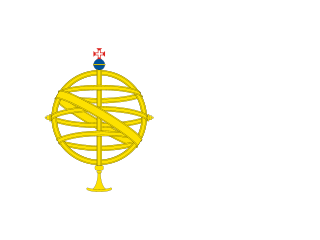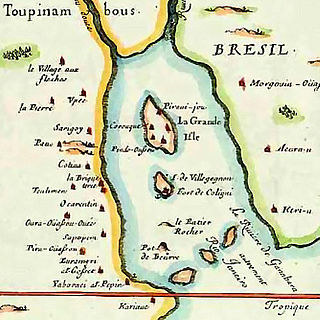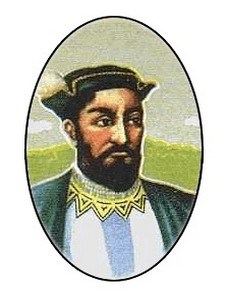 W
WColonial Brazil comprises the period from 1500, with the arrival of the Portuguese, until 1815, when Brazil was elevated to a kingdom in union with Portugal as the United Kingdom of Portugal, Brazil and the Algarves. During the early 300 years of Brazilian colonial history, the economic exploitation of the territory was based first on brazilwood extraction, which gave the territory its name; sugar production ; and finally on gold and diamond mining. Slaves, especially those brought from Africa, provided most of the work force of the Brazilian export economy after a brief period of Indian slavery to cut brazilwood.
 W
WThe Second Portuguese India Armada was assembled in 1500 on the order of King Manuel I of Portugal and placed under the command of Pedro Álvares Cabral. Cabral's armada famously discovered Brazil for the Portuguese crown along the way. By and large, the Second Armada's diplomatic mission to India failed, and provoked the opening of hostilities between the Kingdom of Portugal and the feudal city-state of Calicut. Nonetheless, it managed to establish a factory in the nearby Kingdom of Cochin, the first Portuguese factory in Asia.
 W
WThe Battle of Rio de Janeiro was a battle in 1558 on the French town at Rio de Janeiro, called Henriville. The Portuguese, though in far smaller numbers, defeated the French and made them flee to the jungle. The French town was then burnt by Mem de Sá, the Portuguese governor.
 W
WThe Capture of Recife also known as James Lancaster's 1595 Expedition or Lancaster's Pernambucan expedition was an English military expedition during the Anglo–Spanish War in which the primary objective was the capture of the town and port of Recife in Pernambuco in the Portuguese colony of Brazil in April 1595. An English expedition of ships led by James Lancaster sailed via the Atlantic capturing numerous prizes before he captured Recife. He held the place for nearly a month and then proceeded to defeat a number of Portuguese counterattacks before leaving. The booty captured was substantial, Lancaster chartered Dutch and French ships that were also present there thus making the expedition a military and financial success.
 W
WIn his letter to Manuel I of Portugal, Pêro Vaz de Caminha gives what is considered by many today as being one of the most accurate accounts of what Brazil used to look like in 1500. "Arvoredo Tanto, e tamanho, e tão basto, e de tanta folhagem, que não se pode calcular", which roughly translates as "Such vastness of the enormous treeline, with abundant foliage, that is incalculable", is one of Pêro's most famous descriptions. He describes in a diary from the first journey from Portugal to Brazil and their arrival in this country. This letter is considered the first document of the Brazilian history as much as its first literary text. The original of this 27-page document can be found in the Arquivo Nacional da Torre do Tombo, Lisbon.
 W
WDuarte Coelho Pereira was a nobleman, military leader, and colonial administrator in the Portuguese colony of Brazil. He was the first grantee of the captaincy of Pernambuco and founder of Olinda.
 W
WThe New Found World, or Antarctike is the English title of an account first published in French in 1557 by the French Franciscan priest and explorer André Thevet after his experiences in France Antarctique, a French settlement in modern Rio de Janeiro.
 W
WTrue History: An Account of Cannibal Captivity in Brazil is an account published by the German soldier Hans Staden in 1557 describing his two trips to the new world. The book is best known for Staden's descriptions of his experiences while held captive by the Tupinambá near Curitiba, Brazil. True History became one of the best-selling travel narratives of the sixteenth century.